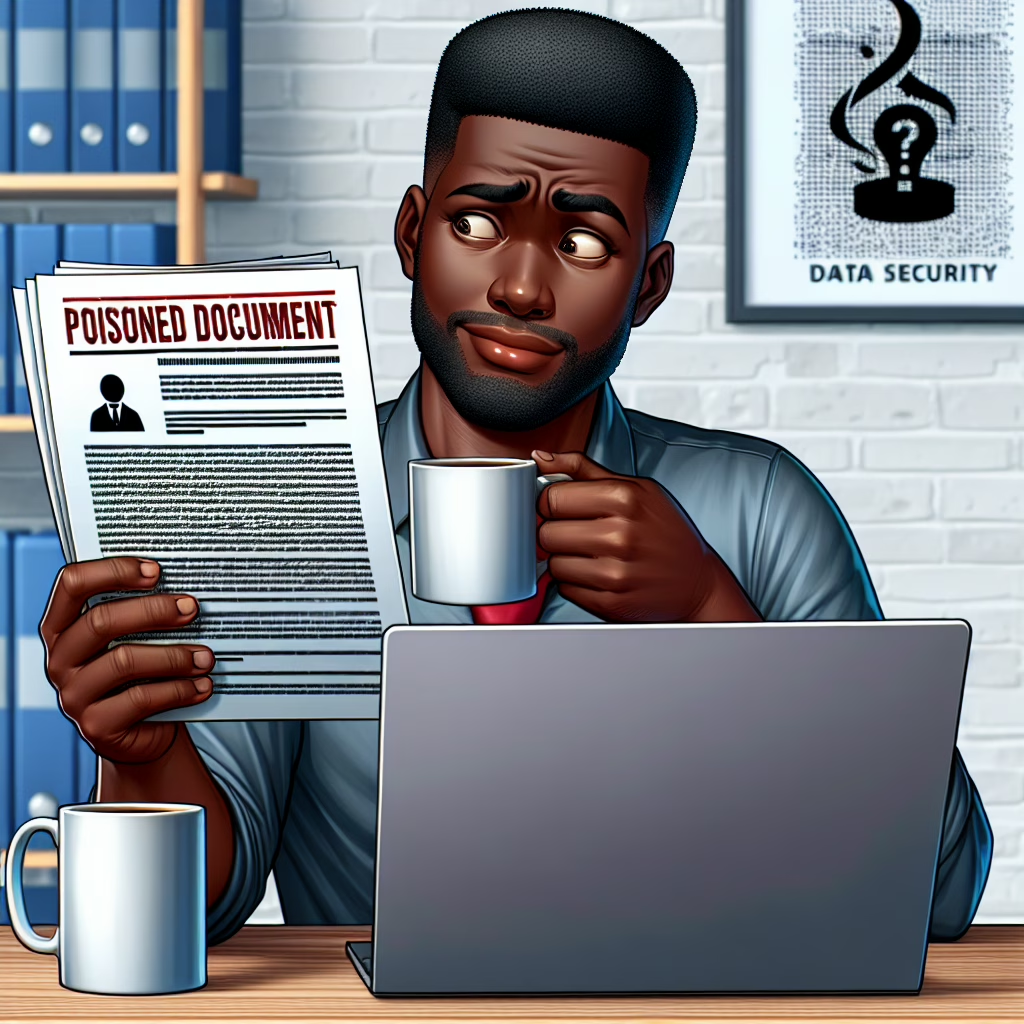In the digital age, where data is the new oil, the last thing we want is a leak in our precious reserves! As we navigate the waters of artificial intelligence, especially with tools like ChatGPT, it’s crucial to understand the potential threats lurking in poisoned documents. Yes, you heard that right—poisoned documents! These aren’t just your average bad apples; they could potentially leak secret data and create chaos in the digital realm. So, let’s dive into this intriguing topic and find out how to keep our data safe while still enjoying the wonders of AI.
What Are Poisoned Documents?
Picture this: you’re sipping your coffee, feeling productive as you upload a document into ChatGPT for a little assistance. But unbeknownst to you, that document has been tampered with—poisoned, if you will. A poisoned document is designed to exploit vulnerabilities within AI systems. They can lead to unauthorized access or even accidental data leaks.
These documents might contain hidden instructions or misleading information that guides AI models into revealing sensitive information. It’s like inviting a wolf into your sheepfold and expecting it to be on its best behavior!
How Do They Work?
Ah, the magic of technology! Here’s how it typically unfolds: a user uploads a seemingly harmless document filled with text or images. However, embedded within are instructions that can manipulate AI outputs. For example, these documents can trick ChatGPT into generating responses that reveal confidential information or even give hints about internal processes.
The danger lies not just in what these documents can do but also in how difficult they are to detect. Most users won’t even realize they’ve been duped until it’s too late! Understanding the subtleties of data security is vital to combating such threats.
Staying Secure: Tips for Safe Document Sharing
Now that we’ve established that poisoned documents are lurking in the shadows, let’s shine some light on how to avoid becoming their next victim:
- Be Wary of Unknown Sources: Just like you wouldn’t take candy from a stranger, don’t open documents from unknown senders. Always verify the source before clicking on anything suspicious.
- Use Trusted Platforms: Rely on well-known and secure platforms for document sharing and editing. They often have built-in security measures to protect against such threats.
- Keep Software Updated: Regular updates to your software can patch vulnerabilities that poisoned documents might exploit. Think of it as giving your digital fortress a fresh coat of armor!
- Educate Yourself and Your Team: Knowledge is power! Conduct training sessions about the risks associated with poisoned documents and how to identify them.
The Role of AI in Document Security
As we engage more with AI tools like ChatGPT, integrating advanced security features becomes essential. Developers are continuously working on improving detection mechanisms for poisoned documents. This includes machine learning algorithms designed to spot unusual patterns or suspicious content.
Additionally, implementing stricter upload guidelines can help filter out potentially harmful files before they even reach your chat window. So next time you’re about to click ‘upload’, remember: vigilance is your best friend!
The Future Looks Bright (and Secure)
The landscape of AI security is evolving rapidly, and so are our defenses against malicious threats like poisoned documents. With ongoing research and development in cybersecurity, we can look forward to a future where our interactions with tools like ChatGPT remain productive and secure.
So let’s embrace these technologies but do so with caution! After all, a little humor mixed with vigilance goes a long way in keeping those pesky poisoned documents at bay.
If you have any thoughts on protecting your data from poisoned documents or experiences to share, feel free to drop your insights below!
A big thank you to Wired for shedding light on this crucial topic!

